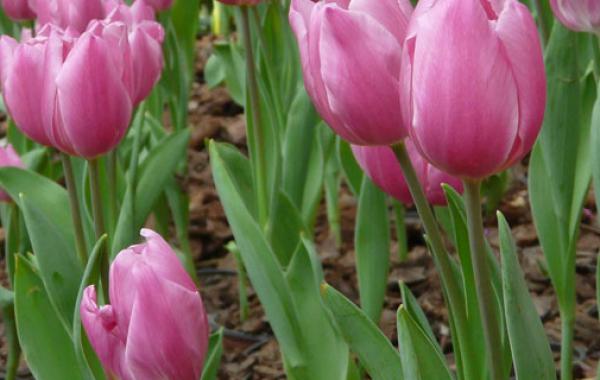How can we judge which fertilizer is lacking according to the condition of flowers?
Flower growers will judge what is wrong with flowers and lack of fertilizers from the color of flowers or the condition of green leaves, because the lack of nutrients in various fertilizers will lead to different growth of flowers. Let's study together.
First, the growth of flowers is hindered by nitrogen deficiency, the leaves are small and light, and the leaves are sparse and easy to fall, which affects photosynthesis, so the growth is poor, the plants are small, the branches are few, and the fruit is small and few.
Second, the growth of phosphorus deficiency is inhibited, the plant is short, the leaves become dark green, gray and dull, with purple spots, withered and shedding.
Third, potassium deficiency leaves appear brown spots, abnormal wrinkles, leaf edges curled, scorched, like a burning state.
Fourth, the growth of calcium-deficient roots was inhibited, the roots were many and short, the cell walls were sticky, and the root tip cells were destroyed, resulting in decay.
Fifth, magnesium deficiency causes chlorosis, chlorosis and white flower disease. Magnesium-deficient flowers often begin to fade from the lower leaves of the plant, appear yellowing, and gradually spread to the upper leaves, the first leaf veins remain green, the rear leaf veins turn yellow, and soon the lower leaves turn brown until they die.
6. when iron deficiency occurs, the upper tender leaves of the branches are damaged, and the lower old leaves remain green. When iron deficiency is light, the mesophyll tissue of flowers is light green, and the leaf veins remain green. In severe cases, all the young leaves are yellow and white, and withered spots appear and gradually scorch and fall off.
7. the leaves of manganese-deficient flowers turned pale and gray at first, and then brown spots were found at the leaf tip, which gradually spread to the base part of the leaves, the leaves withered rapidly, the plant growth became weak, and the flowers could not be formed.
8. Auxin in zinc-deficient flowers was destroyed, plant growth was inhibited and disease occurred. Good zinc nutrition can enhance the resistance of plants to diseases.
9. Sulfur deficiency causes chlorosis, the veins of flowers are yellow, but the mesophyll remains green, which can be different from the symptoms of magnesium deficiency and iron deficiency. Sulfur deficiency begins with red withered spots at the base of the leaves, usually the top leaves of flower plants suffer early, the leaves are thick, the branches are thin and lignified.
10. The growth and development of flowers deficient in trace elements have a greater demand for nitrogen, phosphorus, potassium, calcium, magnesium and sulfur, but less demand for iron, manganese, zinc, copper, boron, selenium, molybdenum and so on. However, the lack of trace elements will also be disadvantageous to the growth and development of flowers. Therefore, it is necessary to apply micro-fertilizer properly in order to ensure that the flowers are always bright.
Related
- What if the leaves of potted flowers turn yellow?
- Florescence Control of several Flowers
- Anti-freezing technology and post-freezing nursing technology of flowers
- What is the classification of flowers? What are the common methods of flower classification?
- Prevention and control of alkali and acid damage of flowers in courtyard
- Technology of Anti-freezing and restoring growth of Flower seedlings in greenhouse and greenhouse
- How does flower fertilization not hurt the root? Fertilization technology of flowers
- Key points of disinfection in flower greenhouse
- Several pesticides that are banned or used cautiously in flowers
- How to fertilize the flowers that watch the leaves?



